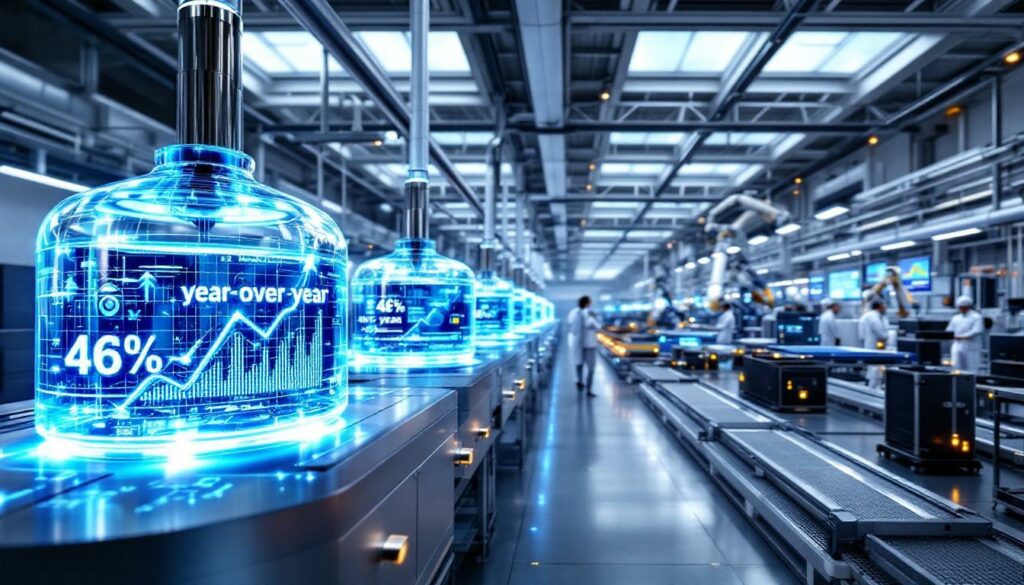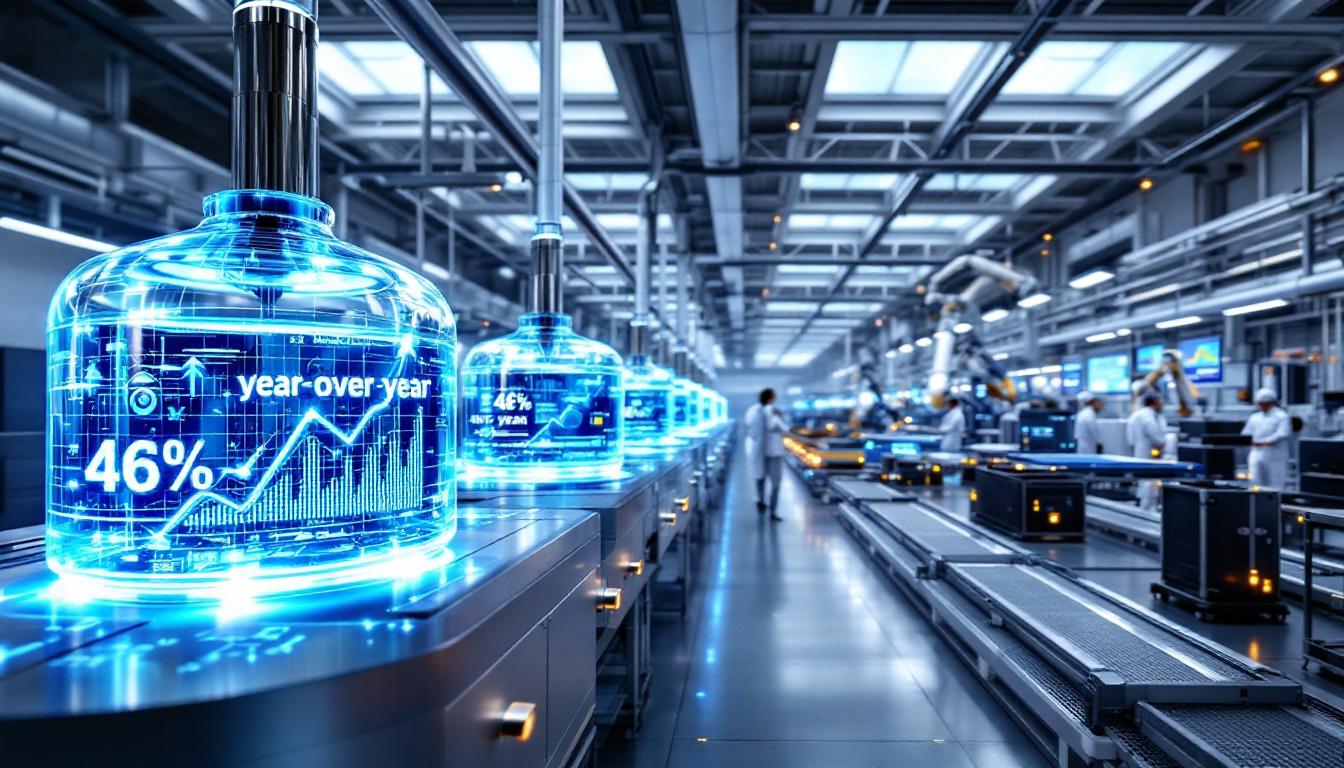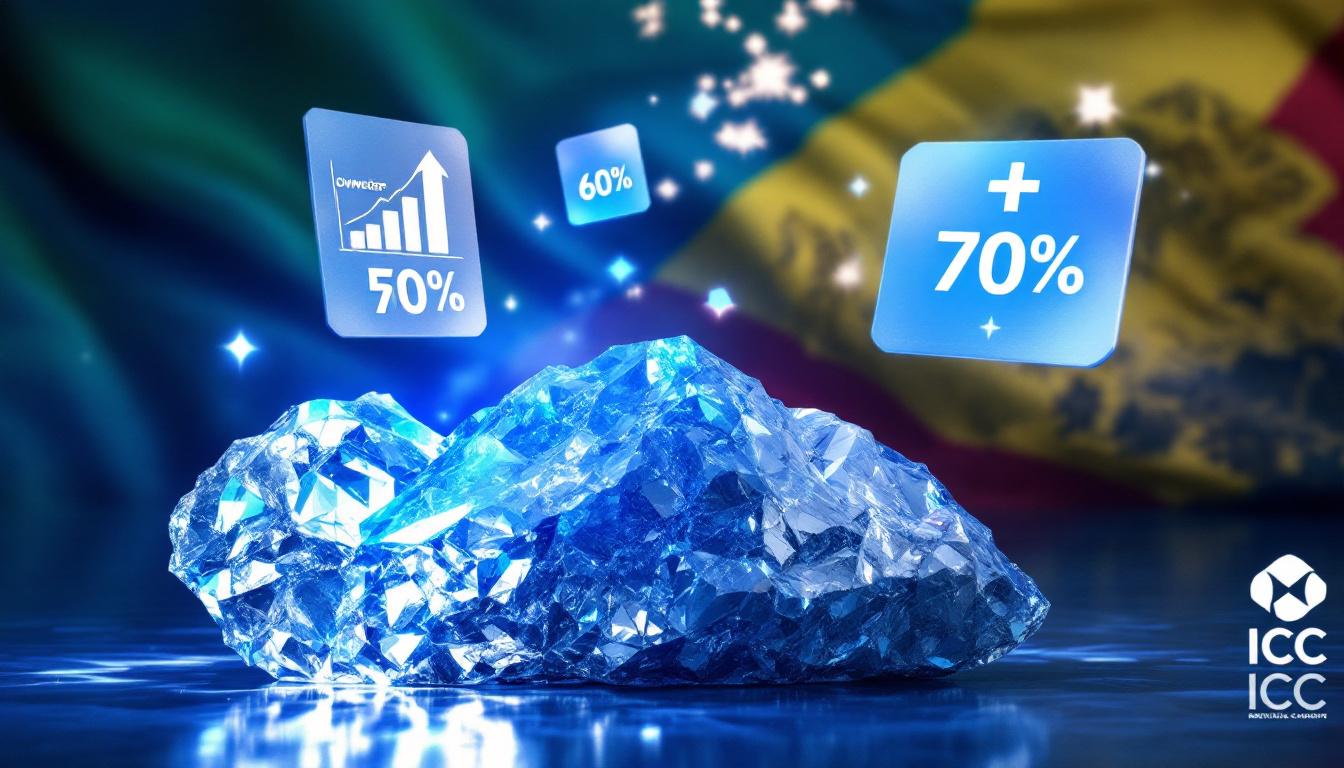Electrolyte Production Market Trends: June 2025 Analysis and Future Outlook
The electrolyte production landscape continues to evolve with cautious optimism as manufacturers navigate a complex market environment. Recent data reveals modest growth patterns alongside significant year-over-year expansion, painting a nuanced picture of the industry's trajectory through mid-2025.
What Happened to Electrolyte Production in June 2025?
Electrolyte production displayed resilience in June 2025, with manufacturers maintaining positive momentum despite market challenges. According to data from Shanghai Metal Market (SMM), production volumes increased by 0.1% month-over-month while showcasing an impressive 46% year-over-year growth compared to June 2024.
"The modest monthly growth reflects manufacturers' strategic approach to production planning," notes the SMM New Energy Research Team in their July 4 report. This measured expansion continues the trajectory observed in previous months, suggesting a market that remains in expansion mode while carefully balancing supply with demand signals.
Production Metrics and Market Indicators
The June 2025 production data reveals several important market dynamics:
- Sustained yearly growth: The 46% year-over-year increase demonstrates the sector's substantial expansion compared to 2024 levels
- Sequential stability: Monthly growth rates have remained positive but modest, indicating manufacturers' disciplined approach to capacity utilization
- Operating rate adjustments: Electrolyte facilities have implemented flexible production scheduling to align with downstream battery manufacturing activity
"The electrolyte sector has matured into a more sophisticated production model that prioritizes alignment with actual sales over maximizing output," according to industry analysts tracking the battery raw materials market.
This measured growth approach represents a shift from previous production patterns that often emphasized capacity expansion over market-responsive manufacturing.
Why Did Electrolyte Production Show Only Slight Growth?
The modest 0.1% month-over-month increase in electrolyte production can be attributed to a combination of demand-side constraints and strategic supply-side responses that have emerged in the current market environment.
Demand-Side Constraints
Several factors are limiting stronger production growth:
- Decelerated end-use market growth: Battery manufacturers have experienced moderating demand in certain segments
- "Purchase as needed" procurement: Battery cell producers have adopted more conservative buying patterns to avoid excess inventory
- Market uncertainty response: Downstream companies remain cautious about forward purchases amid evolving market conditions
- Price sensitivity: The prolonged low-price environment has influenced purchasing behaviors throughout the supply chain
Battery manufacturers have become increasingly sophisticated in their inventory management, balancing just-in-time delivery requirements with cost optimization strategies. This shift has directly impacted how electrolyte suppliers plan their production schedules.
Supply-Side Strategies
Electrolyte manufacturers have responded to market conditions with strategic production approaches:
- "Produce based on sales" methodology: Production volumes are tightly coupled with confirmed orders rather than speculative capacity utilization
- Moderate operating rate adjustments: Facilities carefully calibrate production levels to match actual demand signals
- Inventory optimization: Manufacturers maintain balanced inventory levels to avoid excess carrying costs
- Capacity utilization discipline: Production facilities operate at rates that align with verified market demand
These strategies represent a maturation of the industry, with producers demonstrating greater market responsiveness compared to previous production models that often prioritized maximum output regardless of demand conditions.
How Are Battery Cell Production Trends Affecting the Electrolyte Market?
The electrolyte market demonstrates a strong correlation with battery cell manufacturing patterns, creating a direct relationship between battery production decisions and electrolyte demand signals.
Battery Cell Manufacturing Influence
Recent data indicates several important connections:
- Production increase from May: Battery cell manufacturing volumes showed improvement compared to the previous month
- Operating rate adjustments: Electrolyte manufacturers responded by moderately raising their facility operating rates
- Supply chain synchronization: Production schedules increasingly align with battery manufacturers' requirements
- Just-in-time delivery expectations: Battery producers expect responsive supply timing from electrolyte manufacturers
This interconnection creates a supply chain where electrolyte producers must remain highly adaptive to changing production signals from their battery manufacturing customers. The relationship requires sophisticated demand forecasting and production flexibility.
Market Pricing Dynamics
The pricing environment continues to significantly influence market behavior:
- Extended low-price conditions: Electrolyte prices have remained at compressed levels for an extended period
- Price stability effects: Stable pricing has encouraged conservative procurement strategies
- Cost-sensitive purchasing: Battery manufacturers optimize purchases based on strict cost considerations
- Margin pressure: The pricing environment creates challenges for electrolyte manufacturers' profitability
The combination of pricing pressures and battery production patterns creates a complex operating environment that requires electrolyte manufacturers to maintain disciplined production strategies while remaining responsive to customer needs.
What's the Forecast for Electrolyte Production in July 2025?
Industry analysts project modest production growth for July 2025, with several positive indicators suggesting gradual market improvement compared to June's performance.
July 2025 Production Projections
According to SMM forecasts, July production volumes are expected to show:
- 0.2% month-over-month growth: A slight acceleration compared to June's 0.1% increase
- Approximately 46% year-over-year expansion: Maintaining the robust annual growth trajectory
- Continuing recovery trajectory: Gradual improvement in sequential monthly growth rates
- Stabilizing market conditions: Early indicators of market normalization emerging
These projections suggest a market that continues to expand meaningfully on an annual basis while showing signs of accelerating sequential growth as supply chain conditions gradually improve.
Market Dynamics Shaping July Outlook
Several important factors are influencing the July production outlook:
- Automotive inventory normalization: Vehicle manufacturers have made progress reducing excess inventory
- Battery production stabilization: The pace of production adjustments at battery facilities is slowing
- Demand pattern improvements: Key end-use sectors are showing signs of more predictable ordering patterns
- Cautious optimism: Manufacturers are planning for modest growth while maintaining flexibility
Industry observers note that while challenges remain, the overall trajectory appears to be shifting toward more stable market conditions that could support gradually improving production volumes in the coming months.
How Are Energy Storage System (ESS) Trends Impacting the Electrolyte Market?
The energy storage system (ESS) sector presents a complex picture with diverging domestic and international market dynamics that collectively influence electrolyte demand patterns.
Domestic ESS Market Developments
Recent policy changes have altered the domestic ESS landscape:
- Policy withdrawal effects: The removal of mandatory energy storage allocation requirements has reduced predictable demand
- Demand support weakening: Previously rigid demand patterns have become more variable
- Regulatory transition period: The market is adjusting to new policy frameworks
- Project pipeline adjustments: ESS installations are being recalibrated based on economic rather than regulatory drivers
The policy-driven shifts in the domestic market have created a more challenging environment for predicting ESS-related electrolyte demand, requiring manufacturers to develop more sophisticated forecasting capabilities.
International ESS Market Opportunities
While domestic challenges exist, international markets provide important growth channels:
- Overseas demand growth: Significant expansion in international ESS deployments offsets domestic slowdown
- Geographic diversification: Manufacturers are redirecting resources toward growing international markets
- Export opportunity development: Companies are strengthening international sales channels
- Market stability contribution: International demand helps stabilize overall electrolyte requirements
This geographic diversification of demand creates a more resilient market structure, reducing dependence on any single region while creating new opportunities for electrolyte manufacturers with global supply capabilities.
What's Happening in the New Energy Vehicle (NEV) Market?
The new energy vehicle sector shows signs of stabilization after a period of inventory challenges and production adjustments that impacted the entire battery supply chain.
NEV Market Stabilization Signs
Important indicators point toward improving conditions:
- Slowing downward trend: The deceleration in NEV market demand appears to be moderating
- Inventory digestion progress: Automotive manufacturers have made significant progress working through excess inventory
- Pressure reduction: Inventory challenges at automotive companies have eased considerably
- Demand pressure moderation: The acute downward pressure on electrolyte demand is gradually subsiding
These developments suggest a market that, while still facing challenges, is working through inventory imbalances and moving toward more sustainable production and inventory levels.
Battery Cell Production Adjustments
Battery manufacturers are responding to changing market conditions:
- Production cut moderation: The pace of production reductions at battery facilities is slowing
- Schedule stabilization: Manufacturing schedules are becoming more predictable
- Strategic planning emphasis: Companies are balancing short-term caution with medium-term growth preparation
- Procurement pattern shifts: Battery manufacturers are beginning to normalize purchasing behavior
These adjustments throughout the supply chain create a more stable operating environment for electrolyte manufacturers, allowing for more consistent production planning despite ongoing market uncertainties.
Frequently Asked Questions About Electrolyte Production
What factors are driving the year-over-year growth in electrolyte production?
The substantial 46% year-over-year growth in electrolyte production stems from several fundamental market developments:
- Expanded battery manufacturing capacity across multiple regions and applications
- Increased adoption of energy storage systems globally, particularly in grid-scale applications
- Continued electric vehicle market expansion despite recent inventory challenges
- Long-term electrification trends that remain robust even as monthly growth rates moderate
While short-term monthly growth has been modest, the annual comparison demonstrates the industry's significant expansion trajectory compared to 2024 levels.
How are electrolyte manufacturers adapting to current market conditions?
Electrolyte producers have implemented several strategic approaches to navigate the current market environment:
- "Produce based on sales" methodology that tightly couples production with confirmed orders
- Careful operating rate management to match actual rather than projected demand
- Cost structure optimization to maintain profitability despite pricing pressures
- Flexible capacity utilization that can quickly adapt to changing market signals
These strategies enable manufacturers to remain responsive to customer needs while maintaining disciplined production approaches that avoid excessive inventory accumulation.
What is the relationship between battery cell production and electrolyte demand?
Electrolyte demand demonstrates a direct correlation with battery manufacturing activities:
- Direct volume relationship: Electrolyte requirements are directly proportional to battery production volumes
- Just-in-time delivery expectations: Battery manufacturers require precisely timed electrolyte deliveries
- Formula-specific requirements: Different battery chemistries require specialized electrolyte formulations
- Supply chain interdependence: Production adjustments at battery facilities immediately impact electrolyte requirements
This close relationship creates a tightly coupled supply chain where communication and coordination between battery manufacturers and electrolyte suppliers is essential for effective operations.
How might the electrolyte market evolve in the second half of 2025?
The electrolyte market in the latter half of 2025 is projected to experience several important developments:
- Gradual growth acceleration: Monthly production increases are expected to moderately improve
- Inventory normalization: Supply chain inventory levels should continue to balance
- International demand importance: Global markets, particularly for energy storage applications, will play an increasingly significant role
- NEV market recovery contribution: The continued stabilization of the NEV sector will support overall demand improvement
While challenges remain, the combination of these factors suggests a market moving toward healthier growth patterns as 2025 progresses. Furthermore, recent Australia lithium innovations and battery recycling breakthrough developments could further stabilize the market by addressing supply chain concerns related to critical minerals transition efforts, with electric vehicles transforming the industry's long-term demand outlook.
Disclaimer: The projections and forecasts contained in this article are based on current market data and expert analysis. Actual market developments may vary based on macroeconomic conditions, policy changes, and other factors. Readers should consider this information as analysis rather than definitive predictions.
Searching for Opportunities in the Evolving Electrolyte Market?
Gain a competitive edge in identifying ASX companies involved in the battery materials supply chain with Discovery Alert's proprietary Discovery IQ model, which provides instant notifications on significant mineral discoveries that could transform the electrolyte and battery materials landscape. Visit the Discovery Alert discoveries page to understand how early identification of major mineral discoveries can lead to exceptional investment returns.




